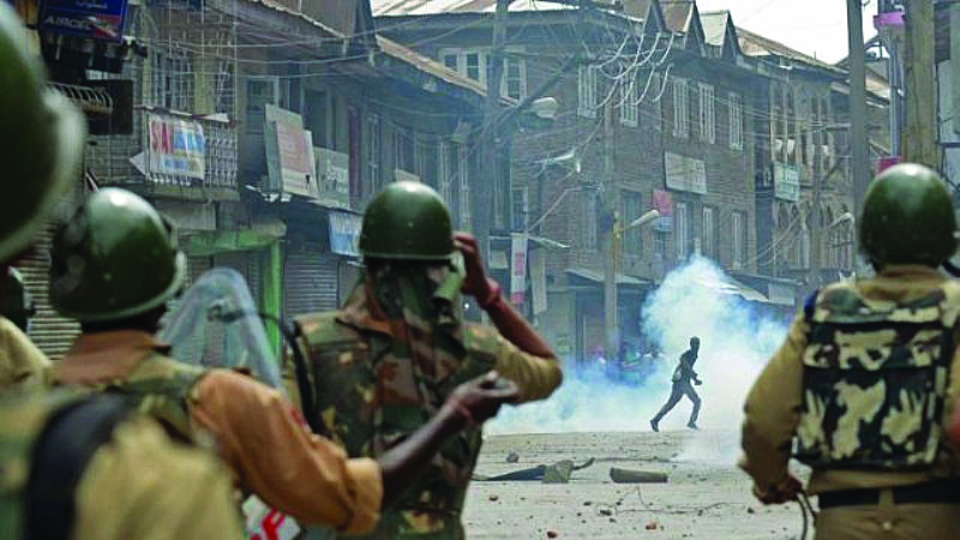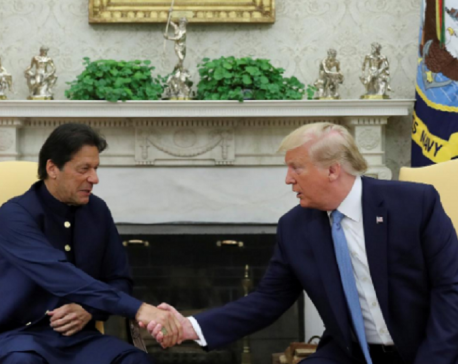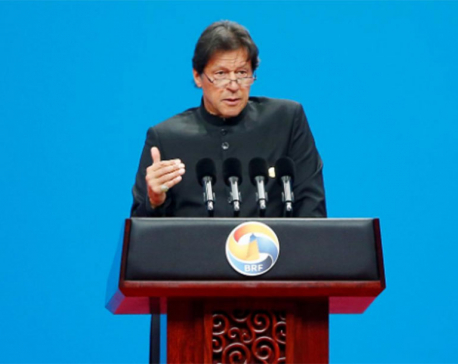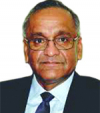
OR

More from Author
In his address to the UN General Assembly on September 27, Pakistani Prime Minister Imran Khan said that India must lift the inhuman curfew in Kashmir and that it must free all political prisoners, especially those 13,000 boys who have been picked up and whose parents don’t know about their whereabouts and that the world community must give the people of Kashmir their right to self-determination.
As I write these lines, the curfew in the Indian Occupied Kashmir (IOK) has entered into its ninth week which was imposed with New Delhi’s August 5 announcement that revoked Article 370 of its Constitution. This Article had allowed special status to IOK.
Soon after the revocation of the Article, Indian Government congratulated the people of India Occupied Kashmir, saying that “the people of Jammu-Kashmir will not only have a better present but also a bright future ahead.” Contradiction between India’s congratulatory tone on one hand and its iron handed clampdown on the other could not be bigger.
If one were to believe the Indian narrative, Kashmir skies would have been glowing with fireworks and sweet shops would have run out of supplies on August 5. Who would want to suppress such celebrations with curfew, pellet guns, arrests and internet and phone blockade that have shocked the peace loving people all over the world? How do you put these words and deeds together?
On August 10, The New York Times carried the report entitled “Inside Kashmir, Cut Off From the World: ‘A Living Hell’ of Anger and Fear”. Sadly it was exactly eleven years after the famous Muzaffarabad March that started from Srinagar on August 10, 2008 and whose number had been estimated at around half a million. This rally was taken out by the people in IOK in the face of the blockade imposed by India and in the backdrop of Kashmir’s traditional trade links with markets in Rawalpindi.
Then India claimed that there were “a handful of people, who wanted to vitiate the atmosphere there”. But then the question is why would one need a million strong security forces to control “a handful people”? Yes, a million soldiers out of which 180,000 had been brought into the occupied territory to suppress strong protest against the very same decision for which India was congratulating millions of Kashmiri people.
Within days of the imposition of curfew on August 5, Indian government claimed normalcy in the occupied territory. Again, these claims were in stark contrast to the curfew, complete media blockade and suspension of the Internet and phone services. Which government in the world would cut off eight million people from the rest of the world under conditions of “normalcy”? Even if these questions were not enough to document the fallacies of the Indian narrative, there is a continuous international condemnation of this high-handedness.
On August 19, Human Rights Watch said that “the Indian government can’t just claim to be lifting restrictions in Kashmir, but needs to ensure that everyone’s rights are respected.” Three days later, on August 22, UN experts expressed deep concern over reports that security forces were conducting night raids on private homes leading to arrests of young people. The Watch also raised alarm over the use of excessive force against protesters, including the use of live ammunition. The New York Times on August 23 reported that the “Indian authorities say life is returning to normal in Kashmir. But thousands of people have been detained, and the military still patrols the streets, firing pellet guns and tear gas to quell protests.”
Condemnations of these grim realities were voiced by many countries at the Human Rights Council in Geneva and at the UN General Assembly in New York. The UN High Commissioner on Human Rights expressed a deep concern over the impact of recent Indian actions on the human rights of Kashmiris, including restrictions on the Internet communications and peaceful assembly, and the detention of local political leaders and activists. The High Commissioner underlined that it is “important that the people of Kashmir are consulted and engaged in any decision-making processes that have an impact on their future.”
The people of Jammu and Kashmir never accepted Indian occupation. And they will never accept it. It was the same rejection that led a Kashmiri boy to blow up in Pulwama. What can be a clearer manifestation of the Kashmiri people’s unacceptability of the Indian occupation than the thirty-year-long freedom struggle in which, on an average, ten people were martyred by the occupation forces every day?
All along, Kashmiris’ struggle had been for their right to self-determination promised to them by the United Nations. At the root of the problem and all this human misery is the non-implementation of a dozen UN Security Council resolutions which were passed some seven decades ago. The UN Secretary General in his statement on August 8 said that “the position of the United Nations on this region is governed by the Charter of the United Nations and applicable Security Council resolutions.”
The situation in Indian Occupied Kashmir is painful, dangerous and alarming. Prime Minister Imran Khan also warned of a bloodbath once the curfew is lifted. On August 3, 91-year-old Kashmiri leader Ali Shah Geelani tweeted his SOS call. His words are, to say the least, alarming for the whole world: ‘Indians are about to launch the biggest genocide in the history of mankind’. For the world community, there is simply no option for inaction.
So what needs to be done? That question brings me back to Pakistan Prime Minister’s demands at the UN General Assembly with which I began this column: Lift the curfew, release the detainees and the world community must give the right to self-determination to the people of Kashmir.
The author is ambassador of Pakistan to Nepal
You May Like This

Pakistan PM accuses India of planning military action in Kashmir
ISLAMABAD/KARACHI, August 14: Pakistan Prime Minister Imran Khan used an address celebrating Independence Day on Wednesday to accuse India of... Read More...

Pakistan says time right for Trump mediation on Kashmir
ISLAMABAD/SRINAGAR, August 4: Tensions between India and Pakistan over Kashmir have the potential to blow up into a regional crisis... Read More...

Pakistan PM Khan speaks with Modi to congratulate him on election win
ISLAMABAD, May 26: Pakistani Prime Minister Imran Khan on Sunday spoke to Narendra Modi and congratulated the Indian leader on... Read More...




Just In
- Govt receives 1,658 proposals for startup loans; Minimum of 50 points required for eligibility
- Unified Socialist leader Sodari appointed Sudurpaschim CM
- One Nepali dies in UAE flood
- Madhesh Province CM Yadav expands cabinet
- 12-hour OPD service at Damauli Hospital from Thursday
- Lawmaker Dr Sharma provides Rs 2 million to children's hospital
- BFIs' lending to private sector increases by only 4.3 percent to Rs 5.087 trillion in first eight months of current FY
- NEPSE nosedives 19.56 points; daily turnover falls to Rs 2.09 billion
















Leave A Comment